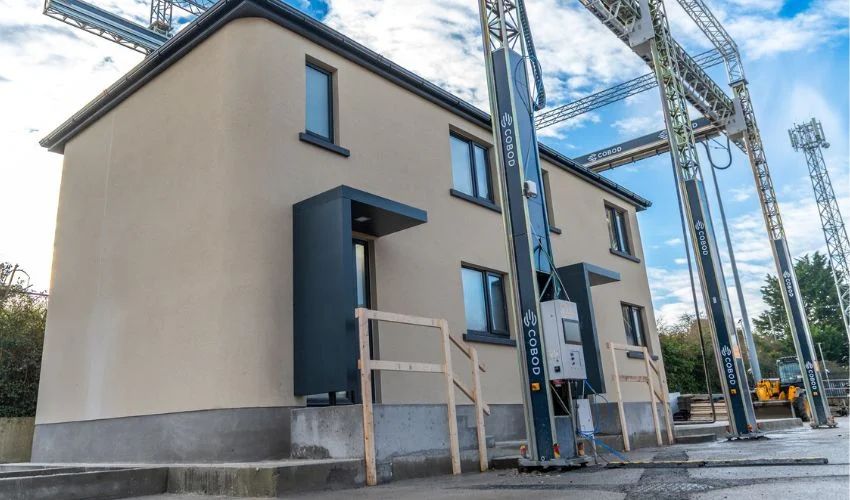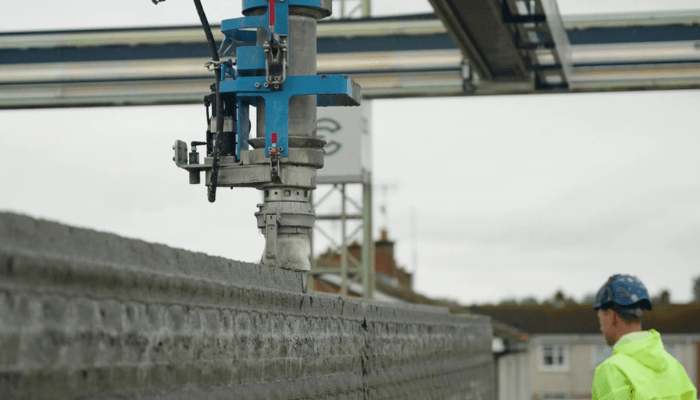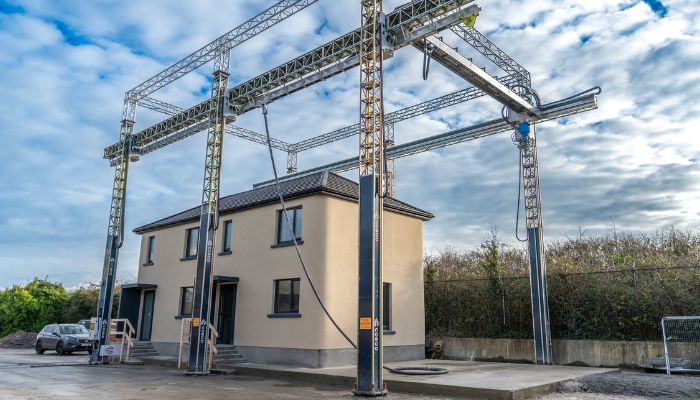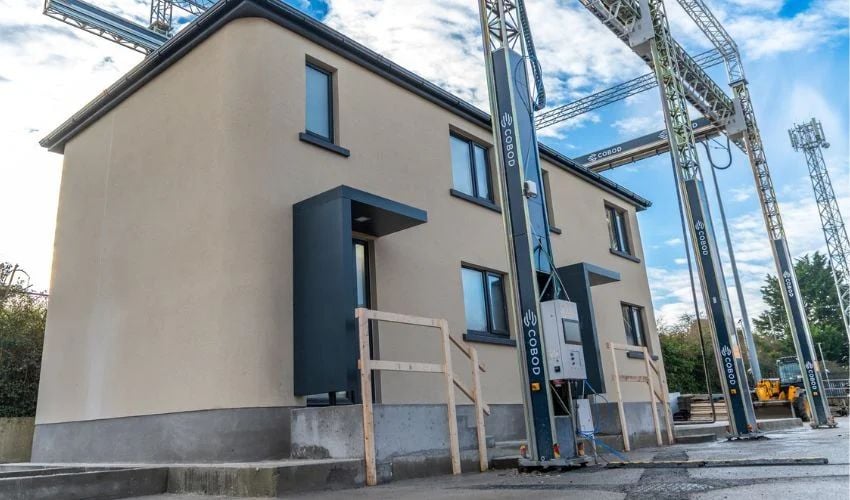
The greatest advantages of the 3D printing of construction are that technology can often build structures faster and cheaper than conventional building methods. Nevertheless, it is logical to take over the technology for social apartments. In Grange Close, Ireland, the company built the HTL.Tech property for a social housing project using the COBOD BOD2 3D building printer. This project not only significantly reduced the construction period, but was also fully carried out with the international standard -iso/astm 52939: 2023, which means that they are completely habitable.
This is the first project in Europe for social housing that is standard for the new ISO/ASTM 52939: 2023 Additive Manufacturing. Social housing are intended for the middle class. Therefore, people who exceed the economic requirements for obtaining public apartments, but do not have enough economic power to gain access to a mortgage. It was therefore necessary to quickly create apartment solutions that do not require much financial effort. For this reason, the company HTL.Tech has developed this project.

The COBOD BOD2 3D construction printer when extruding concrete. (Photo credit: Cobod)
The social housing project
This new construction project led to the construction of town houses and included a total area of 330 m². The buildings were divided into three units, each covering three apartments of 110 m². A load-bearing wall system was designed for these houses that corresponds to Eurocode 6 standards and was created by 3D printing. Each wall consists of two 10 cm thick walls with a 150 mm cavity, which is extruded in load-bearing concrete. This eliminated the need to serve steel supports or columns. 90 m³ of concrete was used for the structure of EN206 C30/37, which offers adequate compressive strength to ensure durability and strength.
The entire project was completed in just 132 working days. In less than five months, the first location preparation for the handover of the keys passed over. As a rule, the construction of this type of house with conventional methods takes at least 203 days. According to Cobod, the use of 3DCP technology led to a reduction in construction time by 35 percent. The company reported:
“About 50% of the time savings came directly from the 3D printing of the wall system. The remaining savings were achieved by the precision of the 3D building pressure, which enables other construction components – such as partition walls, soil systems and special values - to be taken into account during the planning and preparation phases, which caused a more efficient construction. “
The National Standards Authority of Ireland recognized the project to promote quality and sustainability in 3D construction pressure. It is important that the IS EN ISO/ASTM 52939: 2023 protocols can be adapted to other EU countries and thus facilitate a possible spread of this working methodology among Member States.

(Photo credit: Htl.tech)
The COBOD BOD2 Printer
The COBOD BOD2 3D printer prints concrete structures directly on site, with the ability to extrude concrete with a speed of 1,000 mm/s. The COBOD BOD2 was selected for this project because it has a large construction volume, enables the building up to 14.6 meters wide and 8.1 meters high. The printer weighs up to 5390 kilograms and requires an appropriate infrastructure. It takes four to six hours to set the printer and three hours to disassemble. The BOD2 printer is therefore an innovative and highly efficient solution for a sustainable and modular construction.
The advantages of the 3D printing are not limited to its accuracy in the creation of unique geometries, but also to the ability to include other construction components in the design and preparation phases. For example, parts such as partition walls, floors and trusses can be included in the early construction phases and thus make production more efficient. The success of the project in Ireland confirms the great potential of 3D printing in construction and enables the construction time to shorten and to improve the practicality of structures through direct production on site. The numerous projects already completed demonstrate the effectiveness of this technology, which will probably spread further.
What do you think of this Irish social housing project? Let us in a comment below or on our LinkedIn, Facebook and knowledge Twitter Pages! Don't forget to register for our free weekly newsletter, the latest 3D printing messages directly to your inbox! You can also find all of our videos on our YouTube channel.
*Title image proof: Htl.tech
